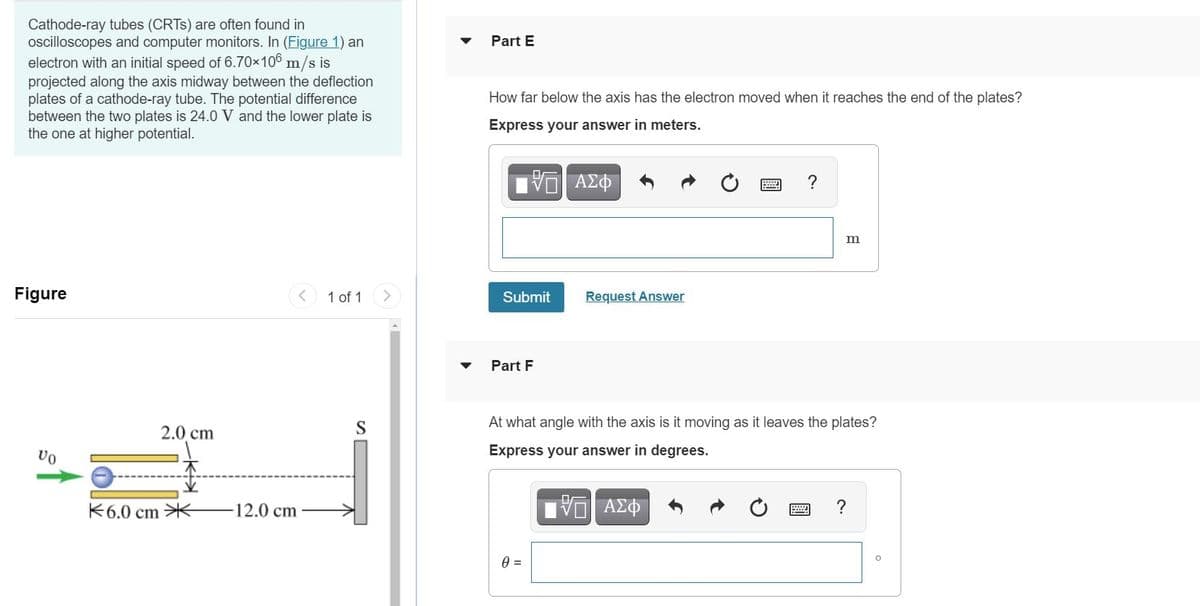Cathode-ray tubes (CRTS) are often found in oscilloscopes and computer monitors. In (Eigure 1) an electron with an initial speed of 6.70x10° m/s is projected along the axis midway between the deflection plates of a cathode-ray tube. The potential difference between the two plates is 24.0 V and the lower plate is the one at higher potential.
Cathode-ray tubes (CRTS) are often found in oscilloscopes and computer monitors. In (Eigure 1) an electron with an initial speed of 6.70x10° m/s is projected along the axis midway between the deflection plates of a cathode-ray tube. The potential difference between the two plates is 24.0 V and the lower plate is the one at higher potential.
Related questions
Question

Transcribed Image Text:Cathode-ray tubes (CRTS) are often found in
oscilloscopes and computer monitors. In (Figure 1) an
electron with an initial speed of 6.70×106 m/s is
projected along the axis midway between the deflection
plates of a cathode-ray tube. The potential difference
between the two plates is 24.0 V and the lower plate is
the one at higher potential.
Part E
How far below the axis has the electron moved when it reaches the end of the plates?
Express your answer in meters.
?
Figure
1 of 1
Submit
Request Answer
Part F
2.0 cm
S
At what angle with the axis is it moving as it leaves the plates?
Express your answer in degrees.
不6.0 cm米
12.0cm
V ΑΣΦ
?
Expert Solution
This question has been solved!
Explore an expertly crafted, step-by-step solution for a thorough understanding of key concepts.
This is a popular solution!
Trending now
This is a popular solution!
Step by step
Solved in 3 steps with 1 images
